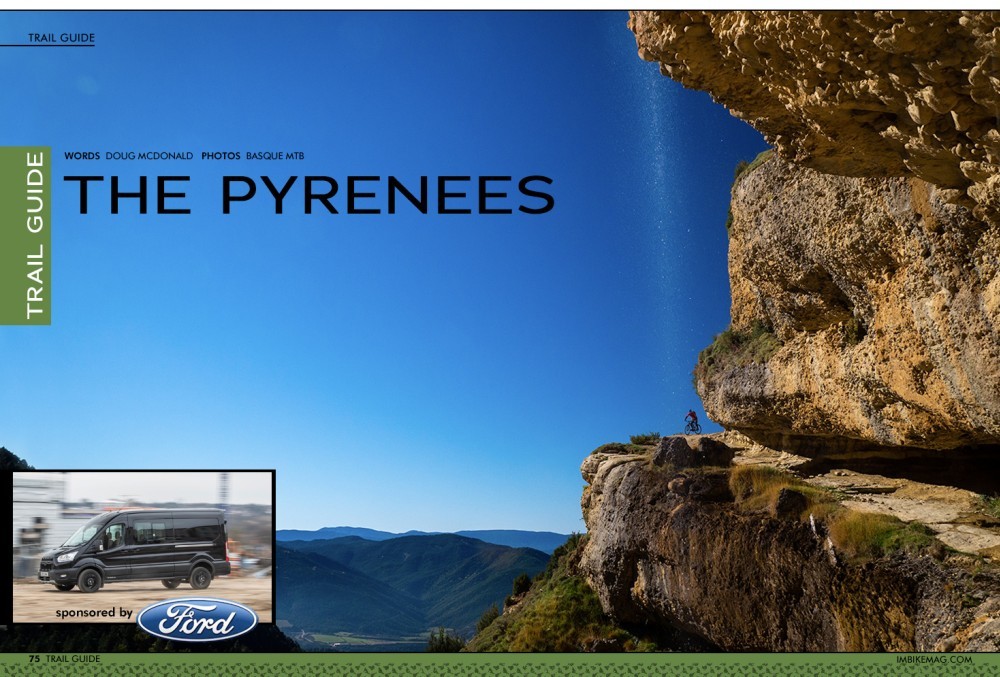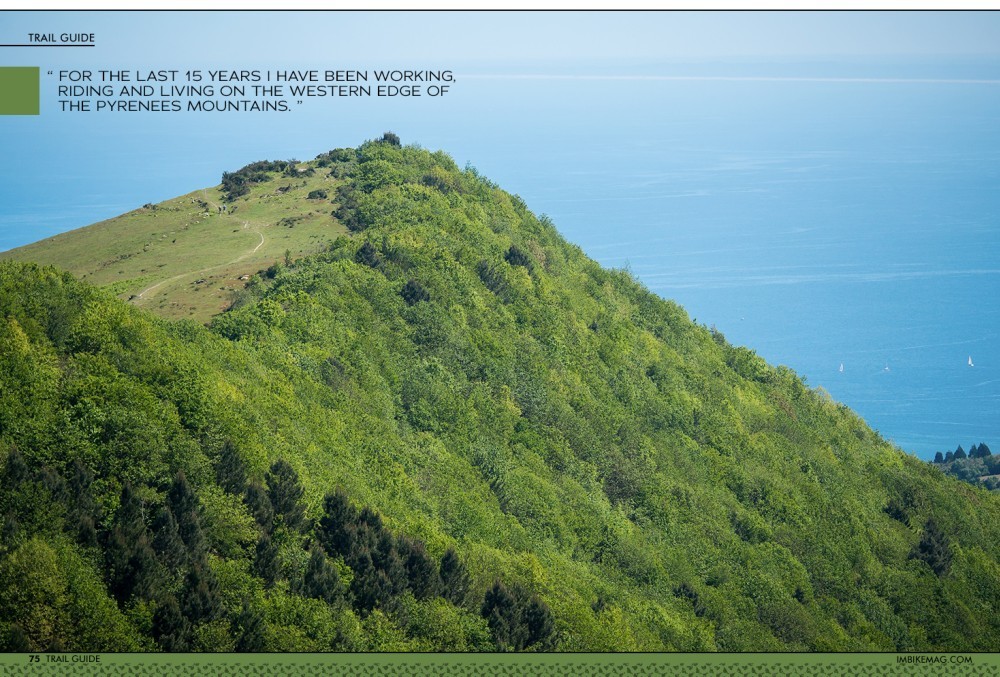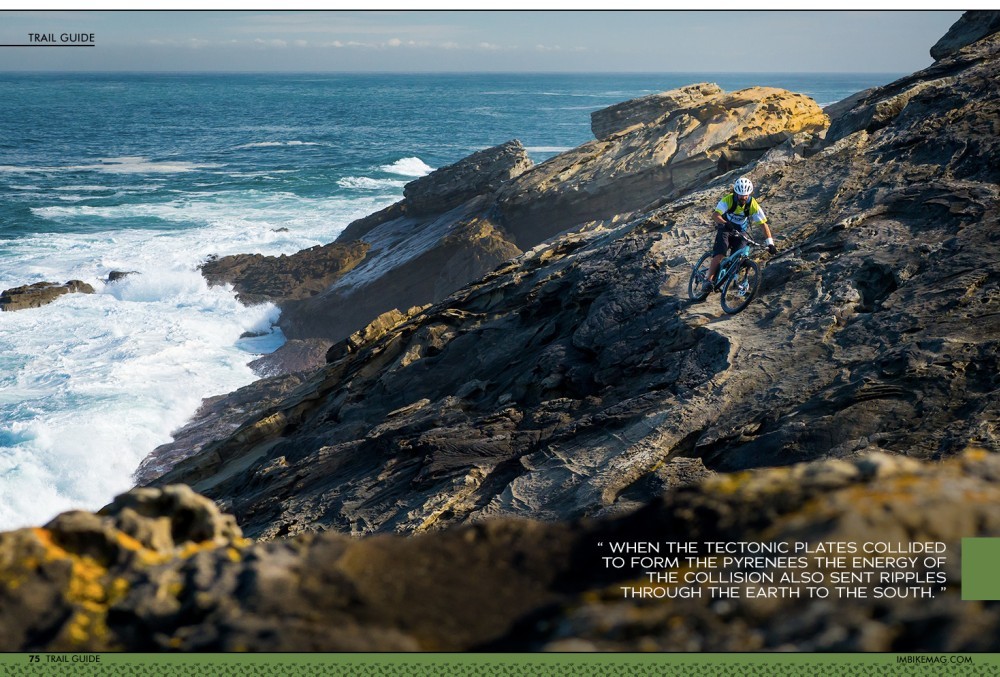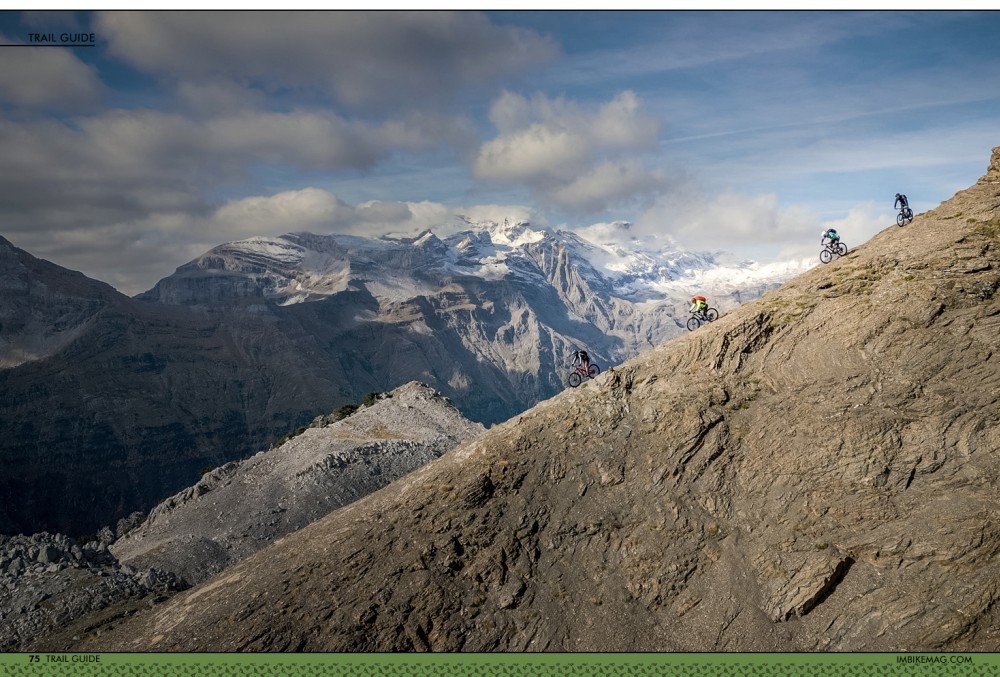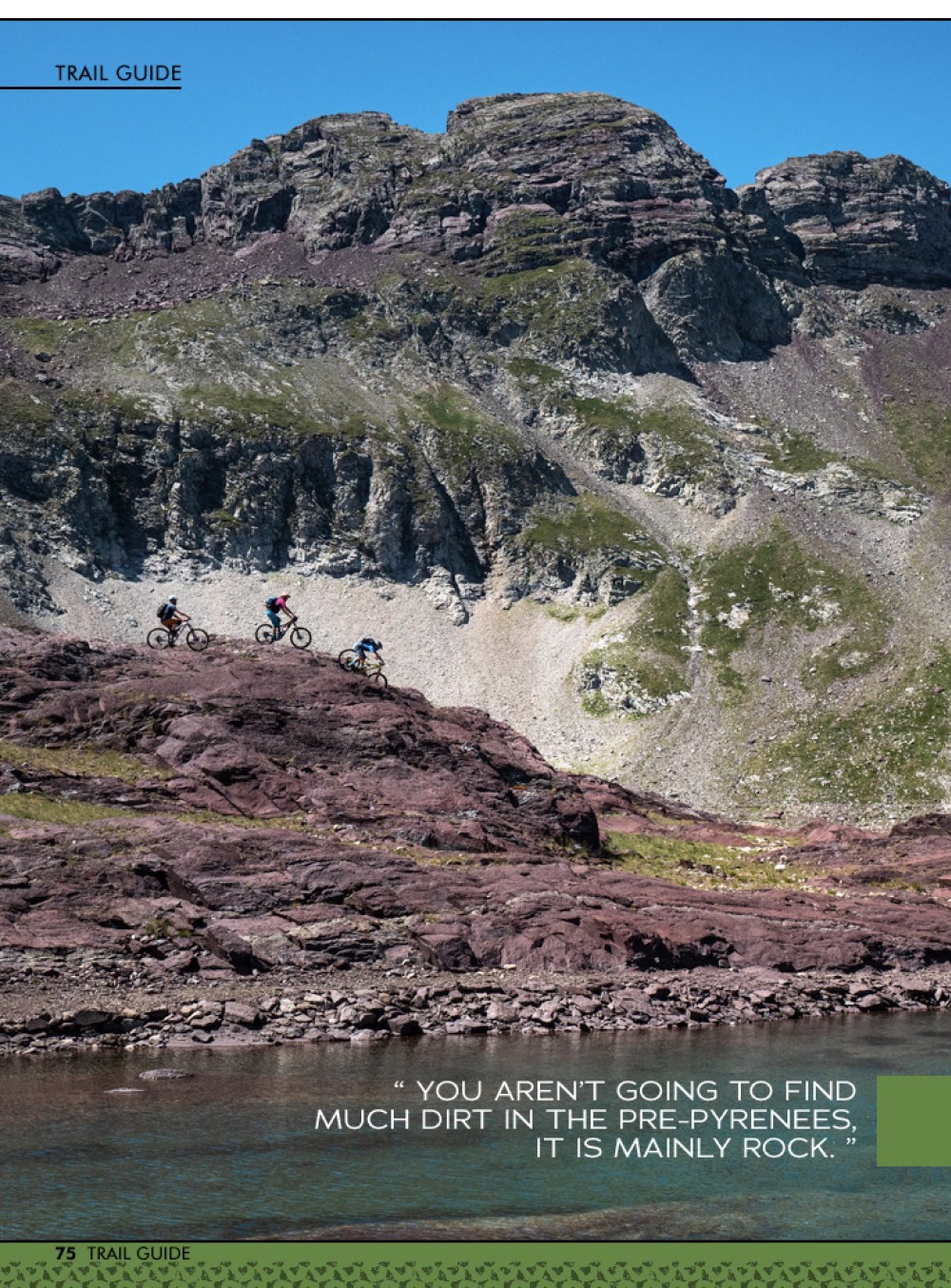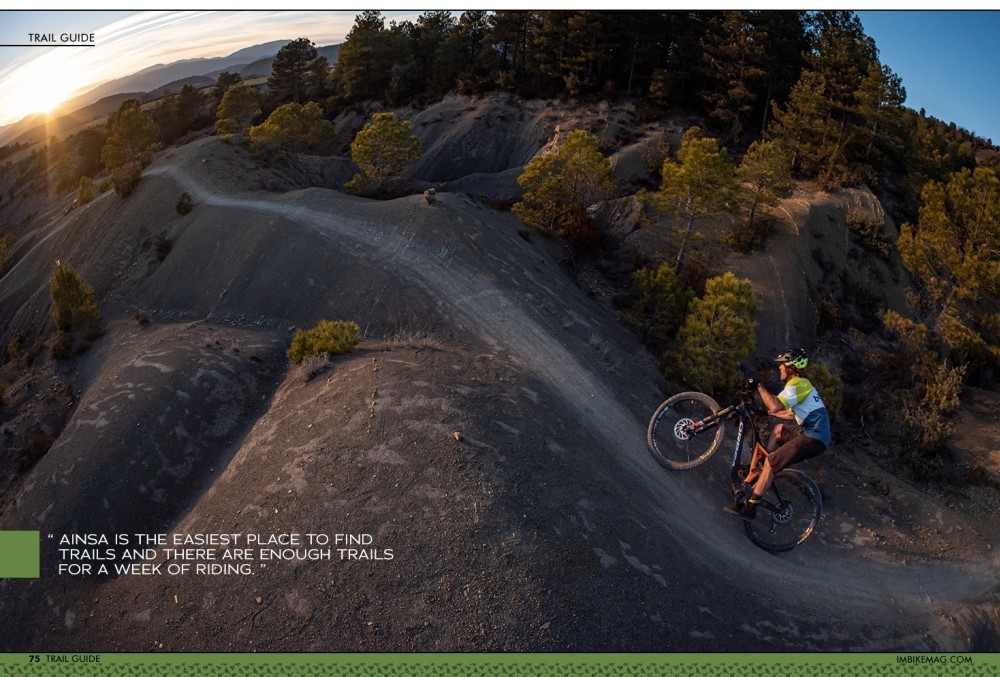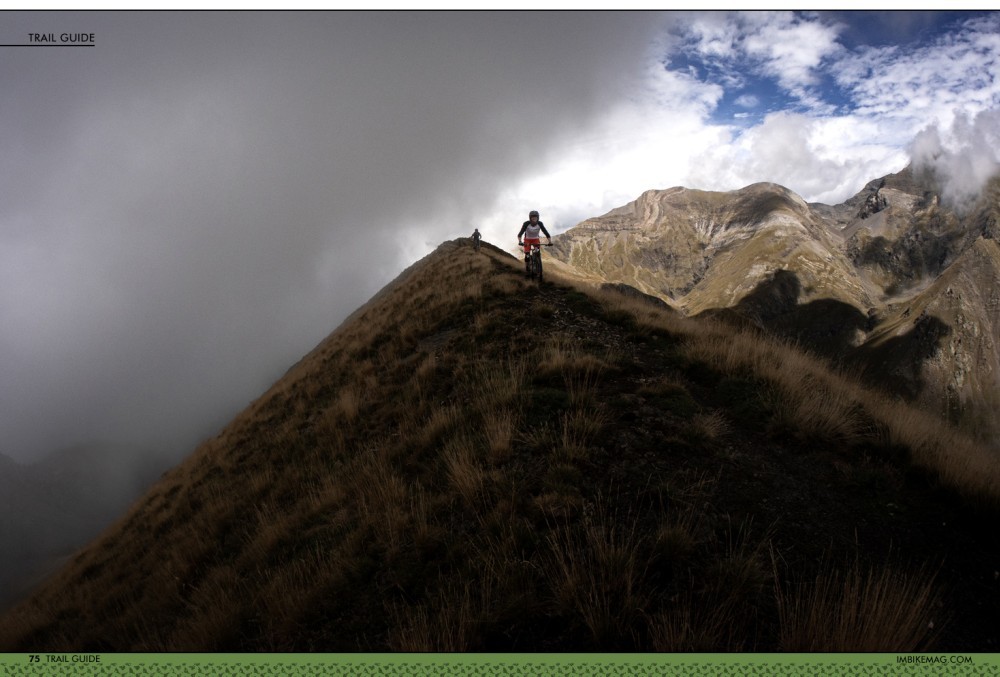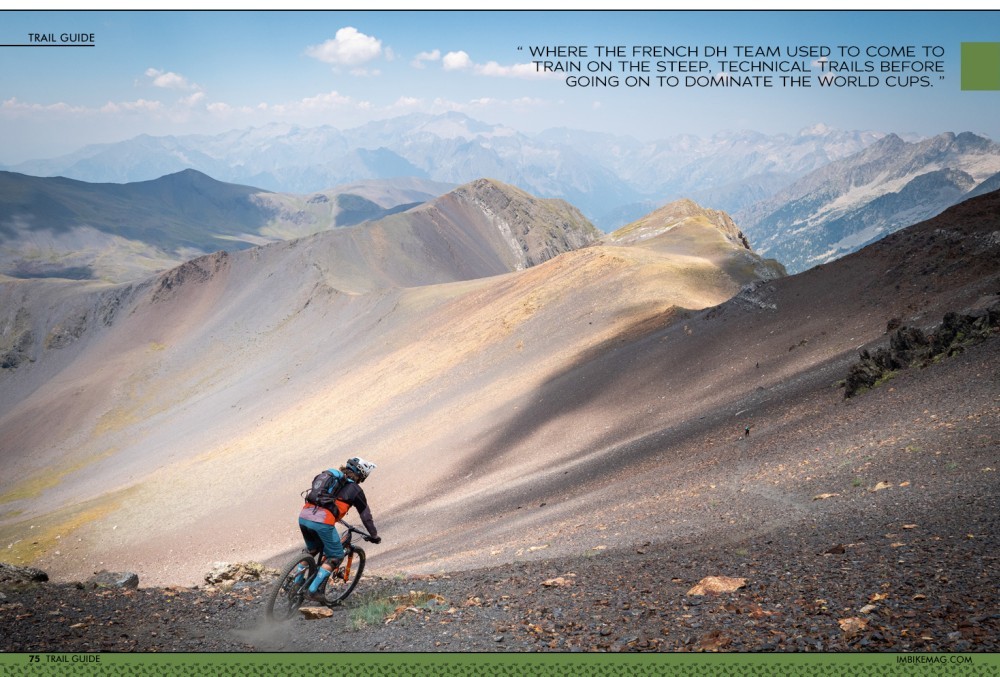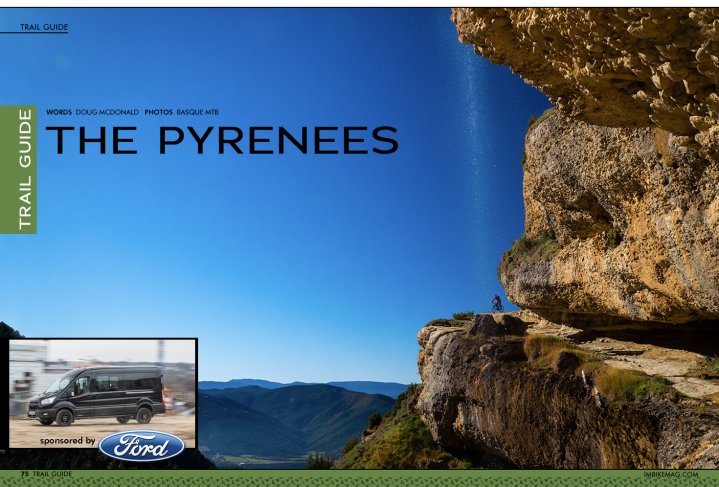
Trail Guide - Pyrenees
Issue 75 / Wed 26th Apr, 2023
Remote, vast and varied. Doug gives the lowdown on the Pyrenees.
True, the Pyrenees is quite a broad description of an area for a trail guide but when I was prompted to create a shortlist of singletrack goodness I had the biggest trouble narrowing things down. After all, I have spent the past decade and a half exploring the region, filtering out the best bits to share with clients as a professional guide. How did I end up here? Well, here’s some background information for you.
15 years ago I was living and working in Scotland, where I was born, lived and learned to ride bikes when my Basque girlfriend suggested a move to just outside San Sebastian on the Basque Coast. I jumped at the chance and for the last 15 years I have been working, riding and living on the western edge of the Pyrenees mountains. This article isn’t about me though, rather it is about where I moved to, the Pyrenees.
When I first arrived there was limited quality mountain biking on the Spanish side of the Pyrenees. Actually, there were lots of singletracks but none of them were made for or adapted to biking. Bit by bit mountain biking gained traction and we were lucky enough to be there and be part of it.
If we fast forward to the present day the area around me has converted from an area which had amazing potential, to one where mountain biking is thriving. We have whole networks of government approved and maintained trails as well as the usual network of unofficial trails which spring up wherever there are passionate bikers. With this much trail goodness around I’d thought to cut it up in various zones and give you some pointers to get you in the right direction.
Zone 1: The Basque Coast
The Basque Coast is where I live. It is the greenest part of the Pyrenees, and has a more humid climate. People say it rains a lot, and it is true but it is also true that we have amazing seasons and that the climate in summer is much drier and we don’t suffer so much from the heat compared to the rest of Spain.
With the climate comes forests and dirt; proper dirt which makes for amazing, flowing trails. The Basque Coast has a great mixture of natural trails and handbuilt enduro trails. I think that this is the area which has the hardest trails, with lots of steep trails with man-made features. Certainly the hardest trails I know are on the Basque Coast but there is a lot of variety for people looking for easier trails.
Places to Stay: The best base if you want a bigger town is San Sebastian. Of course accommodation is harder to get to and more expensive. Another option is to stay in one of the smaller villages, such as Lesaka, or Hondarribia where you will waste less of your time getting to and from the good biking.
Where to Bike: The trails just north of Pamplona, Eramua, are great for a couple of days. Here you have lots of options. Then you have another amazing area around Landa which has a lot of trails in a small area. Finally the trails around Bera and Lesaka are great, they are better with uplift, but here you can find some of the hardest trails you will ride, such as El Cerro and M8121 which is definitely only for the brave. Bring those pads!
Zone 2: Pre-Pyrenees
When the tectonic plates collided to form the Pyrenees the energy of the collision also sent ripples through the earth to the south. Those ripples form the pre-Pyrenees, a range of mountains on the Spanish side of the Pyrenees which rise up to between 1500 and 2000 metres high. This area offers amazing rock formations, and fun, rocky trails.
The most known area here is Ainsa, or Zona Zero as people know it, which has the highest density of trails around. It is also the busiest and is where you will find the most riders. You aren’t going to find much dirt in the pre-Pyrenees, it is mainly rock. There are a couple of trails which have earth on them but I’m keeping those as secret and for the privileged! Main reasons to come to ride here are for the wilderness and for the technical, physical rocky trails.
Places to Stay: Here it is harder to recommend a single town other than Ainsa. Here you can find bike shops and plenty of bars and restaurants. Don’t miss L´Abrevadero where Carlos will pour you the best beer in the Pyrenees.
Where to Ride: Ainsa is the easiest place to find trails and there are enough trails for a week of riding. The climbing can be quite tough but there is some great riding. There are some local uplift options, however they are a bit limited. To experience some Zona Zero trails which few non-locals ride, check out the Sierra de Arbe, particularly the Tinidad descent which you can find on route 86. Of course you can also reach out to me, I’d be happy to take you along on our Ainsa Enduro trip that unlocks the best trails here with full uplift support to make the most out of your days.
Zone 3: High Pyrenees
When the weather gets warm, and when the snow disappears (which is later than you think!) then the time is perfect for getting high (I’m talking about altitude here). With peaks reaching up to 3000m it is not as high as the Alps, but while over there the highest areas are generally reserved for mountaineering adventurers, here it is possible to ride the trails to almost 3000m in many places. This makes the average descent between 1000m and 2000m D-. Not too shabby for an afternoon of fun!
The areas around Benasque, to the north of Ainsa, Val d´Aran, Biescas or Bergua are great places to start to explore these high trails. Expect to ride high, way above the treeline, and be prepared to be self sufficient (food, water, maps, sun protection etc) and ride in a manner appropriate to these wild places. These are some of the most remote mountains on the European continent and it can definitely be a while before mountain rescue can reach you.
Places to Stay: Benasque or Viehla are the two obvious places with several B&B’s and Hotels to choose from.
Where to Ride: The trails around Benasque are spectacular, with big descents and the biggest mountains in the Pyrenees all around you. My personal favourite is the Enduro Mes area in Val d'Aran where you can find endless perfect corners and plenty of steeps. Bring extra brake pads for this one.
Shameless Plug: Check out our Pyrenees Odyssey trip where we link the trails in all of these valleys, crossing the tops, over 5 days with around than 17,000m descending.
Zone 4: The French Side
The French side of the Pyrenees also offers some amazing possibilities. This was the area which originally started offering mountain bike trails back when mountain biking was all about neon colours, cantilever brakes and toe clips. It was in places such as Luchon where the French DH team used to come to train on the steep, technical trails before going on to dominate the world cups.
Then it seemed like the French government lost interest, and for whatever reason there was a period when the French trails were neglected. Now the French are back on it and the French side of the Pyrenees is offering some brilliant options. Places such as Luchon, Loudenville, Saint Larry and Lourdes are offering a mixture of bikepark style trails and natural riding and in many places there are uplift services run by bikers.
Places to Stay: France has lots of camping sites, around Loudenvielle or Luchon for example. A great spot to stay budget friendly, but you can obviously splash out and grab a hotel.
Where to Ride: Loudenville has lots of great trails for enduro bikes and hosts the Enduro World Series regularly. Or if you want some of the steepest trails around then check out Luchon, just be careful if it is wet!
The Wrap up
So there you have it, the tip of the iceberg but a great basic guide on the what and where of riding in the Pyrenees. For more information or to join me on one of our trips, you can of course reach out to me at https://www.basquemtb.com/ or give me a follow on the good ol’ Gramm: https://www.instagram.com/basquemtb/
See you on the mountain!
By IMB



